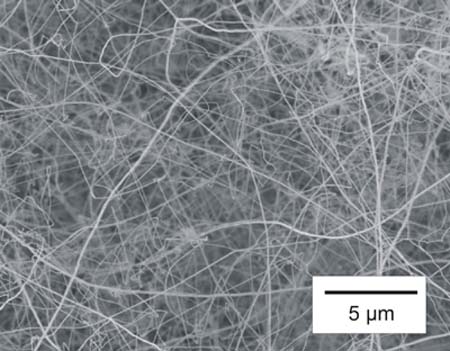Nanowires "Alygvfnylyn Vynylyn» Oligofenylene Vanillin the structure and functions (Doctor of nano-micro-electronics)
Researcher and author: Dr. ( Afshin Rashid)
Note: These types of nanowires, as their name implies, are derived from organic compounds. In addition to metallic and semiconductor materials, it is also possible to make nanowires from organic materials. Recently, a substance called "oligophenylene vinyl" has been developed for this purpose.
The characteristics of these wires (such as conductivity, resistance, and thermal conductivity) depend on the structure of the monomer and its arrangement. Another nanostructure that has been studied and researched today is nanowires. A wire is generally a structure that extends in one direction (longitudinal direction) and is very limited in the other two directions . An essential feature of these structures, which have two outputs, is electrical conductivity. Electrical charge transfer occurs by applying a difference in electrical potential at both ends of these structures and along their length. Making wires in nanometer dimensions is very interesting both technologically and scientifically, because in nanometer dimensions, they have unusual properties . The ratio of length to diameter of nanowires is very high.
Physical properties of oligofenylene vanillin nanowires include electrical, photoelectric and mechanical properties. Nanowires ( SiNWs) have high mobility and surface-to-volume ratios, making them easy to control using a weak electric field. These nanostructures are made of one-dimensional nanowires with a diameter in the range of nanometers and a length of more than micrometers. In making nanowires from regular one-dimensional arrays with the help of different physical and chemical methods. Methods such as electron beam or lithography, heavy ion irradiation, laser, chemical and electrochemical methods Like water heat, spontaneous aggregation methods used to make mold membranes can also be used . In the construction of one-dimensional nanostructures such as oligofenylene vanillin nanowires » Oligofenylene vanillin by electro-accumulation method consists of three general steps : first, the construction of a porous mold as a substrate and a suitable framework for the accumulation of nanowires, and second The mold and the third is the removal of the mold and the separation of the nanowires from it. The properties of the nanowires directly depend on the characteristics of the mold surface such as the size distribution of the holes, the density of the holes and the surface superiority of the nanopores. To control the properties of oligofenylene vanillin nanowires, Oligofenylene vanillin must be subject to parameters that affect the formation and optimization of pore diameter and mold thickness.
Conclusion :
These types of nanowires, as their name implies, are made from organic compounds. In addition to metallic and semiconductor materials, it is also possible to make nanowires from organic materials. Recently, a substance called "oligophenylene vinyl" has been developed for this purpose.
Researcher and author: Dr. ( Afshin Rashid)
PhD in Nano-Microelectronics




